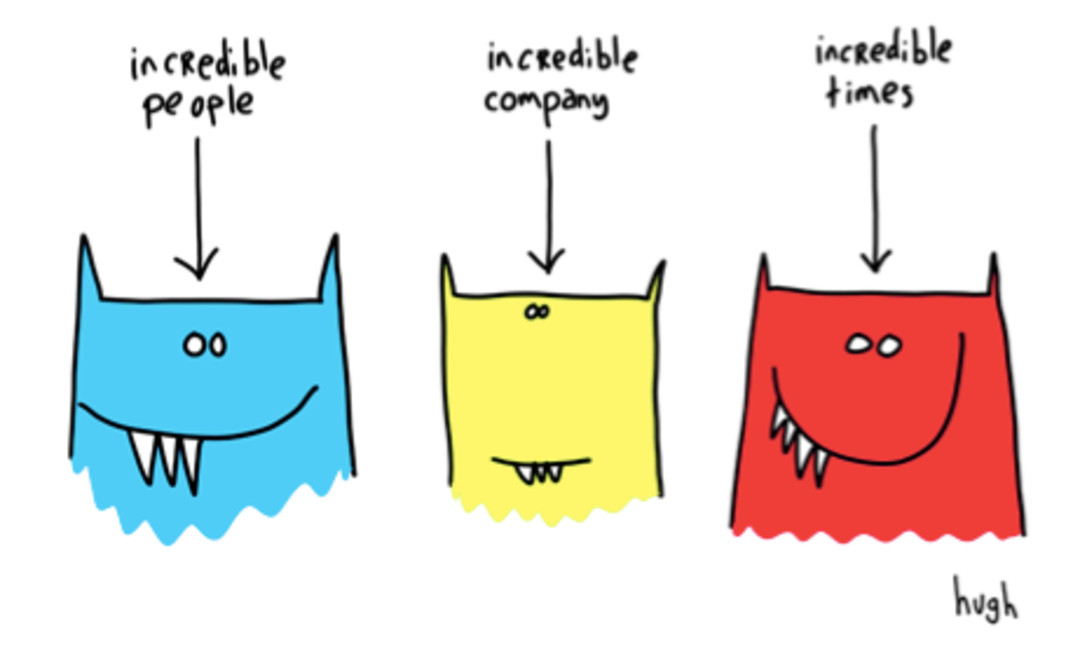No.
But there’s way more to it.
Since the Industrial Revolution, ‘work’ has become the part of your day/life that you spend waiting for it to end. We’ve created a workforce of people who really, really like Fridays.
In a talk delivered by organizational behavior and culture expert Dan Cable, he explains why 80% of the workforce feels so oppressed by their work: because that’s where they leave their best selves.
The talk is fittingly titled, What if you could bring your best self to work?
Because until now, your best self-hasn’t mattered. The “good worker” hasn’t been the one with the most revolutionary ideas or the one who knows how to motivate a team; the best worker is determined by the numbers, whether it’s hours worked or clients met.
This isn’t sustainable.
We’re witnessing a paradigm shift across the workforce, where businesses are organically dressing themselves down to encourage that best self to show through. The reason why is simple: because that’s what businesses have to do to thrive.
What does culture mean, how is it built, and why won’t companies survive without it?
The meaning behind the madness
A quick list of things corporate culture is not: dress-down Fridays; ping pong tables; office happy hour; corporate retreats; open offices; doggy daycare.
Those are results of culture, mostly, but they don’t determine a culture, and they certainly don’t define it.
According to the Harvard Business Review, culture is the expression of vision, values, practices, people, narrative, and place. It’s the way a company chooses to enact its mission in order to recruit employees, impact customers, and develop their business.
It sounds crunchy and it sounds millennial, but those are both signs of big change ahead.
There was a time when who you were wasn’t relevant to what you did, and I imagine that was an advantage to workplace productivity when free love was all the rage.
But cognitive dissonance isn’t sustainable.
There have always been companies who have given employees space for self. IBM was a pioneer in remote working, setting up remote spaces in the 1980’s; Pixar has always made creative events company-wide events, even for the accountants. Only within the last ten years, however, has this become what we expect – and demand – from our employers.
Beyond what we want, studies show that employees who enjoy their work, not surprisingly, do it better — and for employees of the old school variety, don’t worry, the proof is in the numbers. James Heskett, Professor Emeritus of Business Logistics at Harvard, argued that culture “can account for 20-30% of the differential in corporate performance when compared with ‘culturally unremarkable’ competitors.”
Studies by Duke, MIT, Columbia, and pretty much anywhere you can think of have shown similar results.
No one’s arguing whether corporate culture works. Now the challenge is doing it right.
Who’s in charge?
Turning a company’s culture isn’t easy work, whether you’re in HR or a hired consultant.
Culture starts at the ground up on an employee-by-employee basis. Companies can only be great when their people are great — meaning they’re satisfied with their jobs, they feel challenged and useful, and they want to be doing what they’re doing.
Strong cultures encourage employees to love where they work, to love who they work with, and to love what they do. Employees can’t be recruited as individual contractors; they have to be able to work well together as a cohesive unit, to be socially compatible and aware.
Why? Because people who like to talk to each other like to work together.
- PPPPIIICTURRREEE
Gapingvoid, one of the leading consultancies in corporate culture, specializes in producing social objects for clients. The concept originates with Gapingvoid’s Creative Director Hugh Macleod; they’re objects designed to create conversation, the best (and first) example being a wine bottle produced specifically for Microsoft with a blue monster label.
The reason for this is simple. People like to feel connected to others; they like to feel like part of a unit. When there’s something pulling them together, whether it’s a silly office gift or a mission they support, they’ll come together to work hard.
Culture has to be reinforced by upper management. When a company pushes for openness and transparency – something proven to improve bottom-line goals – this has to come from the top, meaning company leadership has to be available. Closed-door corner offices are no longer an option; for employees to work fast, bureaucracy can no longer be an option.
It’s HR’s responsibility to make sure culture is communicated throughout every channel of communication and interaction. Gapingvoid’s approach, “guerilla warfare” by way of social objects, is a start; other options include changing maternity leave policies, allowing or improving remote work options, and creating ways for employees to socialize.
Culture means connection.
The goal of corporate culture isn’t to make recruiting easier; it’s to find employees who feel the company’s mission. Who are genuinely connected to the company’s values.
Employees stay longer when they’re happy. When they’re satisfied, both financially and in their position. When they’re motivated to succeed. When they feel appreciated.
Building culture goes way beyond memos about Hawaiian shirt Fridays and company barbeques; it’s checking in with your value system and morals to give your employees something to work towards.
Culture isn’t optional
We’ve hit a cultural tipping point.
Bureaucracy, slacking, insensitivity, and lack of recognition are no longer acceptable in the workplace. We expect to be good fits for our jobs, and we expect our jobs to fit us. We want to work hard, so long as it’s for something we believe in.
Transparent, open culture solves recruiting and retention issues by guaranteeing both that the right employees are being hired and that employees will be satisfied enough to stay.
A happy employee is a productive employee. And a productive employee is what helps you improve your bottom line.


Leave a Reply